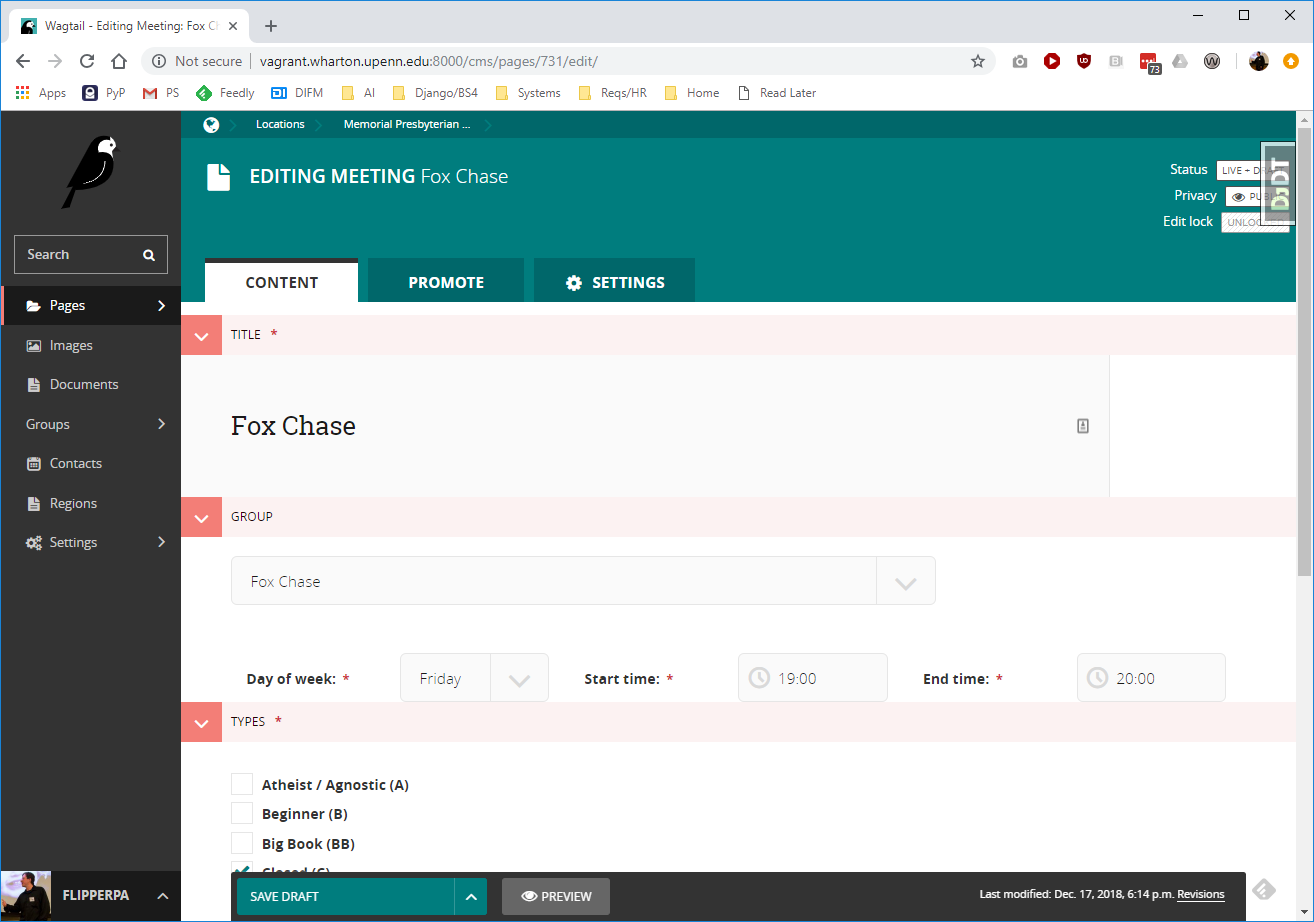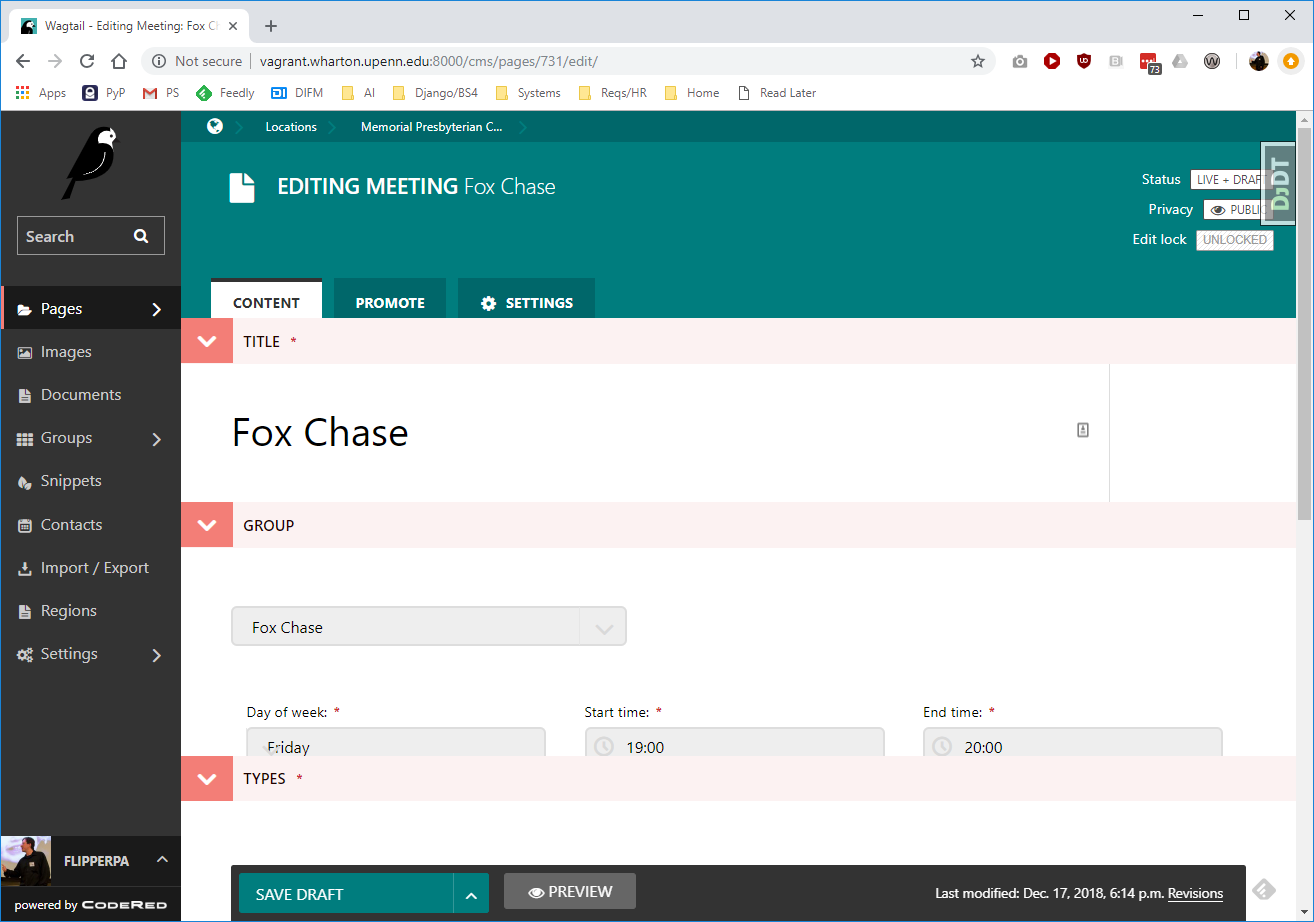The professional WordPress alternative for building marketing websites with Wagtail and Bootstrap.
Website | Documentation | Blog
| Python Package |      |
| Build |   |
CRX, formerly known as CodeRed CMS, provides a large set of enhancements and pre-built components for Wagtail which are ready to use out-of-the box! This saves development time and avoids "re-inventing the wheel" by providing features commonly needed by websites:
-
Streamfield blocks and page templates for Bootstrap 5: rows, columns, hero units, carousels, buttons, modals, cards, and more!
-
Settings for adding logo, navigation, footer, and other common elements.
-
Rich set of SEO tagging attributes on each page.
-
Configurable Google Analytics and other tracking.
-
Robust form builder including the ability for multi-step forms, conditional logic, customized confirmation emails, MailChimp integration, and more.
-
Article pages for building blogs, news, etc.
-
Calendar and event pages.
-
Google Maps blocks, and store locator functionality.
-
Dynamic classifier system, for creating filterable categories.
-
Website search functionality, filterable by page type.
-
Style your site using SASS/SCSS directly from Django, without the need for Node.js
-
Run
pip install coderedcms -
Run
coderedcms start mysite --sitename "My Company Inc." --domain www.example.comNote:
--sitenameand--domainare optional to pre-populate settings of your website. -
Enter the project
cd mysite/ -
Run
python manage.py migrateto create the core models. -
Run
python manage.py createsuperuserto create the initial admin user. -
Run
python manage.py runserverto launch the development server, and go tohttp://localhost:8000in your browser, orhttp://localhost:8000/admin/to log in with your admin account.
See the documentation for next steps and customizing your new site.
In addition to the CodeRed team, many thanks to the Wagtail community and our independent contributors.
If you're interested in building, developing, or contributing to Wagtail CRX, check out the Contributing Guide.
Icon files in coderedcms/templates/coderedcms/icons/:
- Were sourced from the Fork Awesome project at https://github.com/ForkAwesome/Fork-Awesome.
- Are licensed under the Creative Commons Attribution 3.0 Unported license, a copy of which is available at https://creativecommons.org/licenses/by/3.0/
- Have been modified from the original sources.
We would love to hear your questions, comments, and feedback. Open an issue on Github, message us on #coderedcms in the Wagtail slack.



